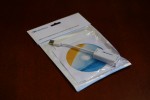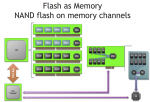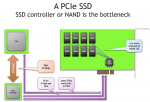Should you buy a Cable Matters USB 3.0 Gigabit Ethernet adapter for your Mac or PC? On the hardware and software side, it seems fine. Once the drivers are installed, it functions adequately. But I am deeply concerned that a vendor that would cut corners on the MAC address and OUI would cut corners other places, leaving me skeptical about the company and its products. Therefore, I cannot recommend this device.
Flash Memory in the DRAM Slots? Diablo Technologies is Working On It…
I’ve written recently about the difference between solid-state drives (SSDs), PCIe SSDs, and solid-state memory over PCIe. But a new technology was presented to me this month that’s even more radical: What if NAND flash was placed on a DIMM for direct access by the CPU? This is what Diablo Technologies just announced as “Memory Channel Storage”.
Thinking About Storage In a New Way, From Cloud to Flash, with Dropbox and Fusion-io
I’ve been a storage revolutionary for quite a while, looking for new ways of data storage rather than technologies that perpetuate the same old approaches. That’s why I’m excited about the implications of two very different API access methods announced by Dropbox at DBX and by Fusion-io today at OSCON.
Apple Brings PCIe SSD To The Masses In The New MacBook Air
Apple’s brand-new MacBook Air might not look much from the outside, but a revolution lurks under the hood: This is the first mainstream computer to eschew SATA in favor of PCIe SSD! Long heralded in workstations and servers, PCIe SSD brings massive potential for storage performance.
Why Are PCIe SSDs So Fast?
The world of storage can be confusing, with obscure terms hiding massive differences in technology and performance. Such is the case for the latest PCI express SSDs: They are much faster than traditional SAS or SATA SSDs, but many aren’t sure exactly why. In this article, I will try to explain the real difference.




